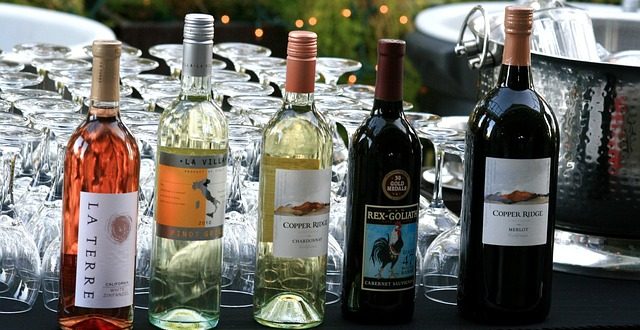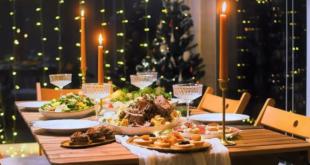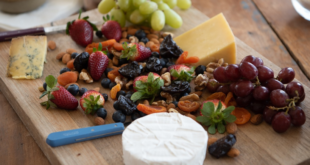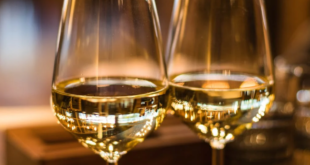If you’ve ever been to a wine tasting get together you have probably really enjoyed yourself. They can be very entertaining as well as learning more about wine. So, how about putting together your own wine tasting event? It isn’t just a case of getting a few odd bottles together and having a few biscuits in between the tastings. If you are going to do a tasting, then a little preparation could go a long way to making it a success and enjoyable for you and your guests.
You might go for a ‘vertical’ or a horizontal’ tasting – and, no that’s not the difference between tasting wines in an upright position or lying down! Don’t worry, we’ve explained below the main types of wine tastings to give you some ideas for what you could do.
Here’s our guide to help you host that perfect wine tasting party.
Vertical wine tasting
This involves surveying a series of wines based on vintage years. This is a nifty way of experiencing just how unique every year can be in the world of wine. A vertical tasting is conducted by tasting one wine variety from the same producer but from several vintages.
For example, you may set up a tasting to feature Clos Du Val’s Napa Valley Cabernet Sauvignon from the years 2003, 2004 and 2005. Tasting the same variety of wines from the same maker and the same vineyard but leaving the production year as the “single” variable allows the party to see how dramatic or subtle a wine changes from year to year.
You will get a better feel for a particular winery’s style and composition with this type of tasting. You can also see how unique weather patterns may affect the grapes from one year to the next.
It is also helpful to have the wine’s literature available while tasting, to look into the winemaker’s notes – did they have a tough time with weather, insects, or did they change to new barrels during a certain vintage? A lot of factors play into a wine’s vintage heritage and these can be interesting points of observation and conversation.
Horizontal wine tasting
This is conducted by focusing on a wine variety from a single year, but from multiple producers. So, you take a 2005 Cabernet Sauvignon from 4 to 6 unique wineries and give them a tasting side by side.
For example, you may want to pick a Cabernet Sauvignon as your taster and compare Napa Valley Cabernet Sauvignon from 2005. So you could try the 2005 Clos Du Val Napa Valley Cabernet Sauvignon, the 2005 75 Wine Company Cabernet Sauvignon and the 2005 Carpe Diem Cabernet Sauvignon and so on.
Some of the variables to consider here are whether or not you would like all of the wines to be from the same region. You can shake it up and feature a Cabernet Sauvignon from Washington, Chile, California and Australia from 2005 or consider limiting it to all Napa Valley Cabernet Sauvignon from 2005. It’s up to you!
Old World vs. New World wine tasting
This tasting can be quite a fun one! You compare a grape variety grown in the “Old world” (i.e. Europe – France, Italy, Germany, Austria, Spain, Portugal) with the same variety grown in the “New World” (i.e. North American, South America, South Africa, New Zealand, Australia).
For example, you could pair a classic, Old World – Northern Rhone Valley Syrah with a New World – Australian Shiraz. A Napa Valley Cabernet Sauvignon with a Bordeaux from France. Or an Oregon Pinot Noir partnered with a Red Burgundy.
You’ll find that Old World wines tend to more subtle in flavour and pride themselves on the grapes’ soil location, whereas New World wines have a bolder flavour and tend to mix grapes from a few locations to build the best bottle of wine.
The wine and cheese tasting
Wine and cheese is a classic combination – and for good reason too. When combining various wines and cheeses at a tasting, you can really start to detect the palate influence of a precise cheese on a particular wine.
For example, serving a “lower end” Cabernet Sauvignon with a small piece of blue cheese, causes the wine to taste more like a sophisticated Cabernet Sauvignon. No one needs to know what you are actually serving! What happens is the blue cheese coats the mouth and lays a foundation softening the young and often harsh Cabernet Sauvignon. A good way to test this effect is to take a sip of the wine first. Then take a nibble of the blue cheese and sip the wine again. You should be able to taste the difference.
When doing this kind of tasting you want to sample a wine, introduce the appropriate cheese pairing and then reassess the wine noting down its qualities in light of the subtle flavour changes.
Here is a list of just some of the wine and cheese pairings to consider for your tasting
| Wine | Cheese |
| Beaujolais | Brie, Camembert, goat cheese |
| Cabernet Franc | Blue, Brie, Camembert, Cheddar, Fontina, goat cheese, Gorgonzola, Port Salut, Swiss |
| Cabernet Sauvignon | Camembert, Cheddar, Colby, Danish Blue, Gorgonzola, Gouda, Parmesan, Blue cheese, Roquefort |
| Chardonnay | Brie, Camembert, goat cheese, Gouda, Gruyere, Parmesan, Provolone |
| Champagne | Beaufort, Brie, Camembert, Cheddar, Chevre, Colby, Edam, Gouda, Gruyere, Parmesan |
| Chenin Blanc | Camembert, goat cheese, Graddost |
| Chianti | Look for regional cheeses to complement an Italian Chianti, perhaps Fontina, Mozarella, Parmesan or Provolone |
| Dessert Wine | Crème Fraiche, Marscopone, or shake it up with a salty/sweet combo. and consider a crumble or two of blue cheese |
| Gewurztraminer | Boursin, Camembert, Chevre, Muenster, Swiss, Wensleydale |
| Gruner Veltliner | Blue cheese, goats cheese, Munster (the original French version) |
| Merlot | Brie, Camembert, Cheddar, Gorgonzola, Gouda, Gruyere, Jarlsberg, Parmesan |
| Pinot Blanc | Brie, Camembert, Feta |
| Pinot Gris | Aged Cheddar, Asiago, Edam, goats cheese, Gouda, Mozarella, Muenster, and even Ricotta for a unique combo. |
| Pinot Noir | Brie, Camembert, Feta, Gruyere, Monterey Jack, Muenster, Port Salut, Swiss |
| Port | Blue, Gorgonzola |
| Riesling | Brie, Blue, Colby, Edam, Gouda, Monterey Jack |
| Rioja | Asiago, Cheddar, Havarti |
| Sangiovese | Blue, Fontina, Mozzarella, Parmesan, Provolone, Ricotta |
| Sauvignon Blanc | Asiago, Brie, Cheddar, Feta, goats cheese, Gruyere, Neufchatel, Parmesan |
| Shiraz/Syrah | Cheddar, Edam, Gouda, Parmesan |
| Zinfandel | Asiago, Blue, Feta, goats cheese, Gouda, Gruyere, Muenster |
The wine and chocolate tasting
Pairing wine with chocolate can be quite tricky, but if you have the right wine to compliment the right chocolate your match can be quite wonderful. Whether you are pairing a light white chocolate or a bitter dark chocolate with wine, there are a few tips to bear in mind.
Make sure the wine is as sweet as the chocolate you are serving, if not sweeter. Otherwise, the taste can be quite sour.
Try to match soft, lighter chocolates with lighter bodied wines and visa versa. The stronger the chocolate, the more full bodied the wine should be.
The “Priceless” wine tasting
This tasting is very straightforward and involves you simply withholding the price of the various wines featured in your tasting. This is crucial if you’re looking to try and keep “taster bias” from entering into the game. As soon as you inform your guest of the prices of wines you’re tasting, you will lose all taster objectivity.
People generally tend to believe that higher priced wines are better than wines that don’t cost quite as much. Although there is some truth in this, other selling gimmicks such as good marketing, great shelf talkers, bigger distribution or label recognition also do the job of selling higher priced wine. On the whole, don’t judge a wine by its label or its price.
The “Price Point” wine tasting
Unlike the “Priceless” tasting, the “Price Point” tasting targets featured wines in a given price range. For example, you could choose to taste Cabernet Sauvignon wines under the price of £20 or Pinot Noir wines between £30 and £50. The goal is to establish a baseline price to compare “apples to apples” so to speak in a given flight of wines.
The Big Eight wine tasting
The “Big Eight” refers to the world’s eight most popular and influential wine varieties on the market. This type of tasting allows guests to thoroughly work their way through these admired varieties and experience their nuances for themselves. People often think of wine in categories of white wine and red wine. This tasting offers new appreciation for both white and red wines and is one of the more educational tastings. As well as the wines colour you learn about the wine’s aroma, flavour and weight.
The Big Eight Red Wines include: Cabernet Sauvignon, Pinot Noir, Merlot, Syrah/Shiraz.
The Big Eight White Wines include: Chardonnay, Riesling, Sauvignon Blanc and Pinot Gris/Pinot Grigio.
How to organise your wine tasting party
1. What type of party are you looking to host? First of all, decide on what type of wine tasting party you would like to host. Check out the “types of wine tastings” above. Once you know which party your looking to host you’ll need between four to six different wines, working your way from light to full bodied with red wines and dry to sweet with white wines. It is also better to start with younger wines and move to more mature wines at the end. Provide each guest with one wine glass and make sure you make available a pitcher of water. This is for rinsing glasses and palates between wines. Don’t forget to provide a dump bucket, for discarding wine before the next pouring.
2. Guest list: Establish your guest list and send invites well in advance, around two weeks before your tasting.
3. Design a tasting card: Why not design a tasting card. Each card will need to specify the type of wine, the vineyard that produced it, the year and a brief description of the wine (which can be found on the wine’s label). Hand them out to each of your guests so they can record the wine’s distinct appearance, aromas and flavours. Perhaps you could have them rate the wines – which wine did they prefer, dislike etc.
4. Appetisers: Don’t forget to provide some appetisers for your guests such as breadsticks, mixed olives, pate, dried fruit or a platter. These are great to have before you start your tasting. Providing a plain loaf of bread as well will help your guests cleanse their palate between wines.
5. Add some fun with a game: To make things a bit more fun, why not offer your guests a blind tasting experience. Rather than your guests knowing which wines they are tasting, pour each wine without identifying the label. You can cover the bottles labels with paper and mark them with a number prior to serving. This will make the tasting a big more challenging, allowing your guests to use all their senses to identify the wines, based on the label’s descriptions. The guest that is able to identify the most wines correctly wins a prized bottle of wine.
6. Decorations: Decorations for a wine tasting party can vary from a classic white table cloth and candles to Old World, Tuscan faux paintings and vintage bottles spread throughout your tasting room. Whatever the decoration, try to keep the atmosphere light and engaging. Start the party off with some wine trivia, have some music playing in the background.
 Vino-Club For Wine Lovers
Vino-Club For Wine Lovers






